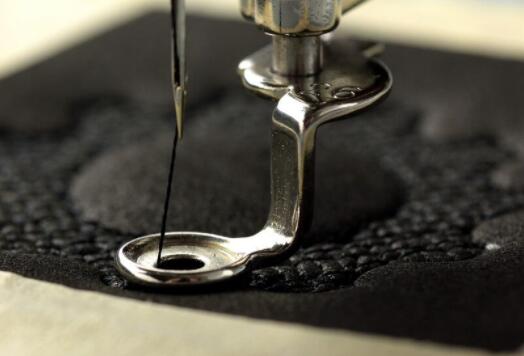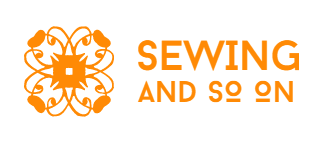There are a lot of differences between embroidery and sewing machine needles. Many people have difficulties differentiating between the two, but the first difference shows up even from their definitions. Embroidery machine needles are the needles used to apply a yarn or thread for crafting a decoration for a fabric. A sewing machine needle is used for sewing materials and fabric together with a thread. So if you are getting it tough or confusing to choose between the two, you can use some key aspects to differentiate between an embroidery machine needle and a sewing needle type.
What is the Difference Between an Embroidery Machine Needle and a Sewing Machine Needle?

1 Point
Embroidery machine needles always have universal points. The tip is slightly rounded up and sits between the ballpoint and the sharp end. The reason for it being universal is because it is suitable for stabilizers and most kinds of fabrics. On the other hand, sewing machine needle points vary from the type of material to be stitched. Several types of sewing machine needle points include ballpoint needle for sewing knits, universal ends for sewing woven fabrics, and chromium ballpoint that can sew knit fabrics on all singers.
2 Size
The smallest size of an embroidery machine needle ranges from 7 to 11mm, and the largest sizes range from 70 to 110mm. The measures will always depend on the type of stabilizers, thread, and fabric you want to use them on. The stitch density of your projects’ embroidery design contributes a lot to the type of needle you will need. On a sewing machine needle, the smallest size is 60/8, used for sewing more refined fabrics like silk; the largest sizes are 110/18, used to sew canvas and types of hard materials. In a sewing machine, the kind of material and how fine or heavy it appears determines the size of the needle to use.
3 Type
There are several types of embroidery machine needles, which all depend on the kind of fabric one is stitching on, the type of thread to be used, and the sort of decoration one is making. Sizes always accompany types. The following are the main types of embroidery machine needle and where they should be used:
4 Flat Shank Needles
There is a wide variety of flat shank needles ranging from 15 x1 to ELx705. Let’s see how each performs its functions and where it is suitable:
15×1:
HAx1, 705H. It has a flat shank, and the eye size is regular, especially to home sewing machines, quilting machines, and home sewer based embroidery. Many sizes are available in the market, some happen to have a sharp point, and some have ballpoints. These needles can be availed with PD or titanium finish.
15x1ST:
HAx1, 705H-E; this is 15×1 specifically upgraded for stitching embroideries and decorative stitches. It is made with quality standards to ensure that it lasts for more extended periods. It is equipped with a big eye; this reduces tension and stress on the thread. The needle can accommodate metallic threads required for top threading and therefore making needle threading less difficult. It is also present in sharp and ballpoint and the P/D titanium characteristic.
15×1 SP:
HAx1 SP the needles are specially crafted from 15×1 type for elastic or stretching materials and woven knits tightly knitted. Its shape is more of a snake-like one, made with high standards to ensure that it lasts long and does not break easily. The head is made in a way that the blade is slightly reduced above the slightly bulged eye.
HLx5:
The needle is mainly made to sew heavy, hard, and thick materials. It sews through several ply applications such as heavy embroidery, jeans, quilting, and applique. It has a flat shank and is mostly used for industrial purposes. They are made with high-quality standards and manufactured using hard chromes, which adds up to their long lifespan. They are availed in sharp and ballpoints in conjunction with P/D finish or the hard chrome.
5 Ballpoint Needles
These needles are designed to ease hole-making in loosely woven materials or knit. The hand is more preferred than the sharp point one because it avoids damaging the fabric. The point is smoother, and therefore when it penetrates through the material, there is no or very little damage that can be created. It avoids this by pushing aside the fabric it encounters when penetrating. The sharp point does not consider moving aside; it penetrates through the whole material, thus causing damage.
6 Perfect Durability (PD) Needles
The needles are more wear-resistant as compared to the other hands; this is due to the titanium-nitride finish. It is used for embroidering enormous stitch patterns and penetrating dense and heavy materials. Despite working on harsh surfaces, the needles still maintain their regular dimensions and shape since they do not wear out quickly. Using this type of needle will reduce your defects and give and massively increased production.
7 Sewing machine needles
These needles are not much special like the embroidery machine needles because you consider the type of fabric and thread only for a sewing machine. The following are the sewing machine needles and the materials they are sewing:
- Hard or jeans, sewing jeans and denim fabrics or canvas
- Twin needle, they are used to stitch two closely spaced parallel stitch lines once.
- Universal, they are used to stitch whole woven fabrics.
- Leather, just as the name suggests it is used for stitching vinyl or leather fabrics.
- Wing needle, as it sews it creates small holes in the fabric, mostly used in heirloom sewing. To obtain the best results from this needle, you are recommended to use linen or cotton, or any other natural woven fiber.
Final Thoughts.
Understanding the difference between the two is essential for any sewing and embroidery project. Different needles are used for various purposes and on other fabrics. Getting enough knowledge about it, you will alleviate losses and inconveniences in your projects. It is essential always to consider the price and the materials used on the needles you are planning to use. Fabrics also determine the type of needle you will be using. The threads also play an essential role in stitching and sewing, some stitching threads can’t go through on hard and tough fabrics, and some threads can destroy more refined materials.
